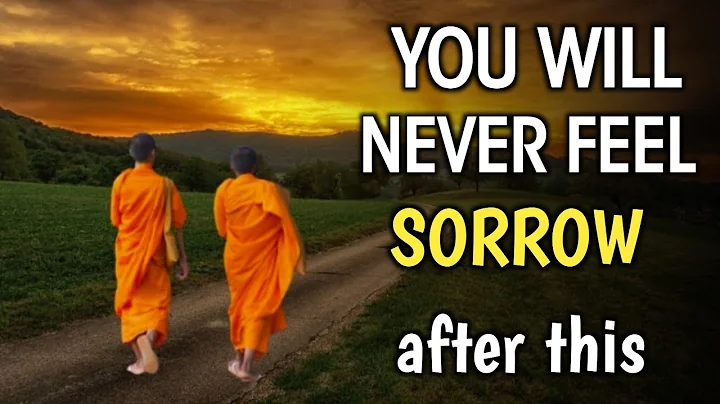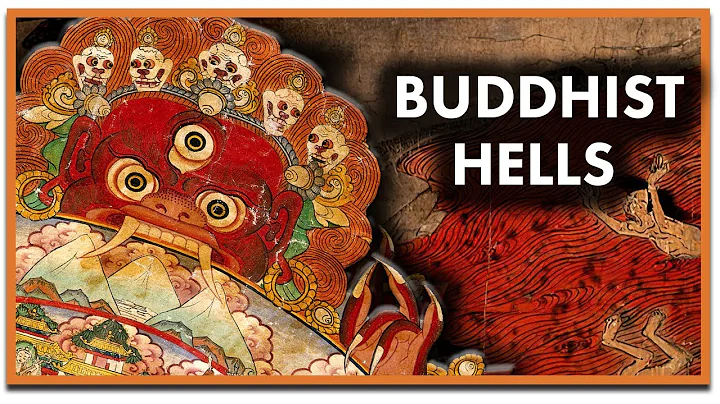

On October 13, 1959, Xuyun passed away at Yunjushan .
Location: | Yongxiu | Category: | Characters |

Interpretation cloud image Source: Wikipedia
Shi Xuyun (?-October 13, 1959), her secular surname is Xiao, her name is Gu Yan and Yanche, her name is Deqing, and her pseudonym Huanyou Laoren, a native of Jinjiang, Fujian, Chinese Buddhist monk, a Zen monk, forty-seven generations of Caodong, forty-three generations of Linji, the twelfth generation of Yunmen, the 8th generation of Dharma Eye, and the 8th generation of Wei Yang. Since becoming a monk, he has practiced Zen's mind and achieved great success in his life. His Zen skills and asceticism have been praised. He has combined the five Zen sects with his body to rectify the Buddhist jungle and build famous temples, making him an outstanding representative of modern Chinese Zen.
Source: Wikipedia

Telling the story of the old monk Xuyun is very risky. The author hesitated for a long time before he decided to write this article. What this series strives to do is to look at a new perspective and comment on history. However, for some events and characters, it is difficult to tell them from a new perspective, and it is even more unsuitable for commentary. The author's limited understanding is only one aspect, politics cannot be commented on, and religion is also likely to cause trouble. Religion is always politics. From ancient times to the present, from China to outside, all famous religious figures are political figures. No matter what reputation he has before and after death, political and religious figures can never escape criticism or even attack.
The following picture is a textual article by Hu Shi . His "three surveys" of Xuyun have caused great trouble. Anyone who knows about Master Xuyun should know that his age is a mystery. Is it a 120-year-old Nirvana always controversial. In the Wikipedia cited in this article, Xuyun's birth date is marked "?".
" Hu Shi's complete works " Volume 9 Philosophy·Religion
According to the current unified statement on domestic websites, Xuyun was born in 1840. His surname is Xiao, from Xiangxiang, Hunan, and was born in Quanzhou . Because his father Xiao Yutang was once the prefect of Quanzhou. In 1858, he went to Gushan Temple in Yongquan, Fuzhou to become a monk.
In the following years, Xuyun visited famous temples, including Putuo Mountain, Nanhai Putuo Mountain, Ningbo Ashowang Temple, Zhenjiang Jinshan Temple, etc., meditating on Zen and listening to scriptures, and learning the teachings of many sects. Later, he paid homage to Wutai Mountain . In 1900, when the Eight-Nation Alliance invaded, he followed the teams of Cixi and Guangxu to Xi'an. Later, he entered Sichuan from Zhongnanshan , passed through Tibet, went to India, entered from Yunnan, passed through Dali, and placed an order at Jizu Mountain . In 1904, I went to Thailand to pay homage to the King of Thailand and raised huge amounts of funds. He went to , Yangon, and Penang, Malaysia to inspect Southeast Asian Buddhist and preach. After returning to China, Xuyun went to Jiujiang to pay homage to Monk Zhishan at Haihui Temple in Lushan and attend the Buddhist chanting meeting.
The Zen Hall in Haihui Temple . The author took it in May 2022.
Note: This dilapidated and cold Zen Hall in Haihui Temple is said to be the only remaining Zen Hall in the world where the old monk Xuyun once lived. I doubt this statement. There are many temples where the old monk Xuyun has lived. Although they may have been destroyed in that era, they are mostly rebuilt now. The meditation hall of Haihui Temple is also a typical newly built temple building in the 1980s and 1990s.
The author failed to find out when Xuyun arrived at Haihui Temple in Lushan. All parties have different records of his dazzling travels over the past few decades, and they are even inconsistent with each other. Some articles claim that he went from Southeast Asia to Japan via Taiwan and returned to Shanghai in 1905, but some say that he returned to Yunnan from Southeast Asia and arrived in Jiujiang via Guizhou and Hubei. The author estimates that he arrived at Haihui Temple in the spring of 1905.
Source: Xuyun’s paintings collection
1912, Xuyun and Taixu and others agreed to reorganize the Buddhist congress chapter and change it to the "Chinese Buddhist Association". They went to Nanjing to meet Sun Yat-sen, and then went to Beijing to meet Yuan Shikai . In Shanghai, the Chinese Buddhist Association was reorganized and the Chinese Buddhist Association was established. After the meeting, Xuyun returned to Yunnan, met with Cai E and organized Buddhist branches in Yunnan, Guizhou, Yunnan and Tibet.
1920, Xuyun went to Kunming at the invitation of Yunnan Governor Tang Jiyao , rebuilt Xishan Huating Temple, and later renamed Yunqi Temple.
Yunnan coup re-discipline " declaration " February 27, 1921
Note: In the newspapers of the Republic of China that the author can find, the name of monk Xuyun appeared for the first time in an article in Shenbao in 1921. The article said that there were seven or eight hundred prisoners in the model prison in Yunnan. After monk Xuyun went to the province to do a ritual, he asked Tang Shuai (Tang Jiyao) to express his compassion and pardoned more than 500 people. The second report I found was the Southeast Daily in 1942, which was 21 years apart. Since 1946, he has been reported more.
Xuyun, Hongyi, Taixu and Yin Guang are the four great monks of the Republic of China. Hongyi, Taixu and Yin Guang's life experiences are very clear. Xuyun's experiences are the richest, but he became famous the latest. Whether it is news reports, books published, public lectures, etc., Master Xuyun seems to be much worse than the other three, and there are often conflicts in the speeches of all parties.
The following news reports on the temple scandal are as an example, which mentions that "the old monk is one hundred years old." It is currently recognized that Master Xuyun was born in 1840, so by 1947 it should be 108 years old instead of 100 years old. Looking through other newspapers, Xuyun was 100 or 101 years old in several reports from 1947 to 1948. The author believes that perhaps this is the reason why Master Xuyun is questioned by some people, and everyone can find the so-called "clear evidence" and blame each other.

"Qianfeng Daily" May 15, 1947
1929, Xuyun went to Yongquan Temple in Fuzhou to serve as the abbot and founded the school precepts, which was later changed to a Buddhist college. Xuyun served as the dean and trained monks. In 1934, he went to Qujiang, Guangdong to preside over the reconstruction of Nanhua Temple. It took ten years to make the temple the largest Buddhist holy land in Guangdong. In 1942, Chairman of the National Government, Lin Sen, launched the "Great Compassion for Protecting the Country and Relieving Disasters" in Chongqing, and asked Xuyun to preside over it. Xuyun arrived in Chongqing and was treated to Chiang Kai-shek . In 1943, Xuyun moved to Yunmen Temple in Ruyuan, Guangdong, and took 9 years to rebuild the temple.
In the autumn of 1949, Guangdong was liberated, and Xuyun stayed in Yunmen Temple. In 1953, the Chinese Buddhist Association was established. Xuyun is one of the four honorary presidents and the only Chinese Buddhist monk among the four. In June of the same year, I came to , Lushan, Jiangxi, and recovered from , Dalin Temple, . This series introduces Dalin Temple in "Today in Jiujiang History·Master Taixu and Lushan World Buddhist Federation", which was rebuilt during the Republic of China under the auspices of Taixu Master .
On August 7, 1953, the old monk Xuyun and his disciples took a photo at Dalin Temple in Lushan, Source: Buddhist disciple library
Because it is rare to be quiet in Dalin Temple, on August 14, 1953, Master Xuyun climbed Yunju Mountain and presided over the rebuilding of Zhenru Zen Temple . The latter story is written in "Today in Jiujiang History·Zhenru Temple with a remarkable status in Yunju Mountain", and this article will not be repeated. In September of the same year, the old monk Xuyun went to Jiujiang to visit Nengren Temple .
On October 13, 1959 (the 13th day of the ninth lunar month), Xuyun passed away in Yunju's thatched hut, and his life was 120 years old, and Monk La 101 years old. In September 1990, the Xuyun Memorial Tower of Zhenru Temple in Yunju Mountain was completed. The memorial hall is located in the former site of "Yunju Thatched Hun" during Xuyun's lifetime. In the middle of the hall is a bronze sitting statue of Xuyun.
On September 8, 1953, Xu Yun took a photo with believers at Jiujiang Nengren Temple , picture source: Buddhist disciple library
Old monk Xu Yun did not propose much Buddhist theories, nor did he establish a monk education system, but he is the most influential figure in modern Chinese Buddhism, and only Master Taixu can compare with him. The author believes that he and Master Taixu are two different types of people. Taixu was a revolutionary, while Xuyun was a perseverance. In the era when Buddhism was in a slump in the early 2000s, Xuyun only used the most traditional practices of Zen, abiding by the rules and regulations, built temples to promote Buddhism, worked hard, and educated his disciples by example. In that special era, he still passed on the torch and cultivated a group of leading figures in modern Buddhism.
The author originally didn't want to comment anymore, so he couldn't help but say a few words. When writing this article, I tried my best to dig out a few old news from the pile of old papers, which can be regarded as adding some "new" materials to the network that I copied and pasted today.

In the autumn of 1957, the old monk Xuyun took a photo in front of the Heavenly King Hall of Zhenru Zen Temple in Yunju Mountain Picture source: Buddhist Disciple Library

"Today in the History of Jiujiang" is a series of short articles introducing local history. Each article selects an event that occurred on the same day or month with clear historical records, accompanied by relevant photos, news pictures, literature books and other video materials, and makes appropriate comments on the causes and impacts of the incident. Because the author's level is limited and the information is incomplete, there will be fallacies and inappropriate choices. Please criticize and correct me.







![[English] Who Am I - Lecture 1 - Ven. Guan Cheng - DayDayNews](https://i.ytimg.com/vi/KU0fUs2It5o/hq720.jpg?sqp=-oaymwEcCNAFEJQDSFXyq4qpAw4IARUAAIhCGAFwAcABBg==&rs=AOn4CLDFpQUN_QwRfC7bmP4sUadq-RcYdg)
![A Moving Masterpiece 清明上河图 [English narration] - DayDayNews](https://i.ytimg.com/vi/kxff-4GktOI/hqdefault.jpg?sqp=-oaymwEcCOADEI4CSFXyq4qpAw4IARUAAIhCGAFwAcABBg==&rs=AOn4CLBtHGLeUpJNCYDJYnZTuISQ1N5Vag)


